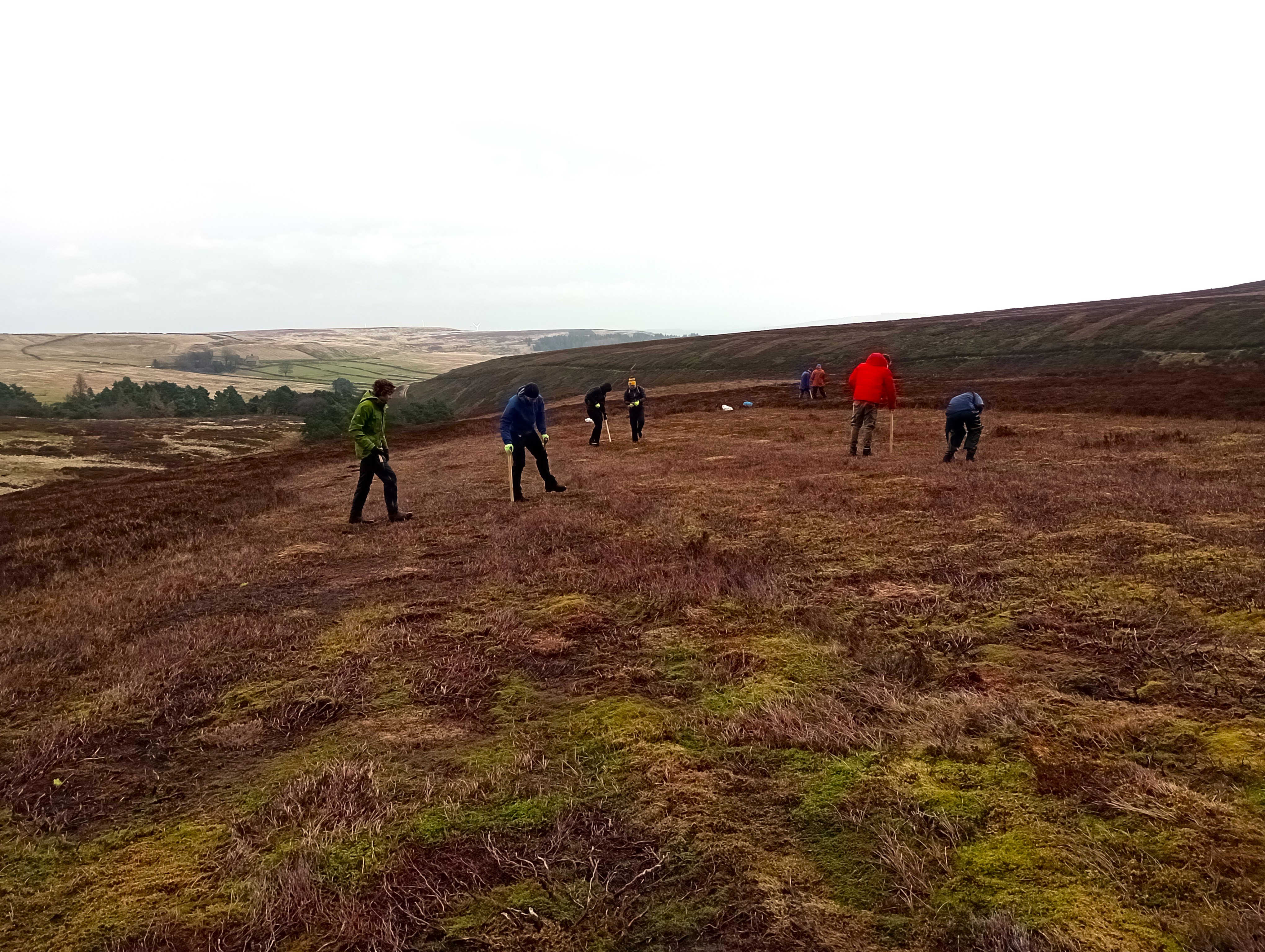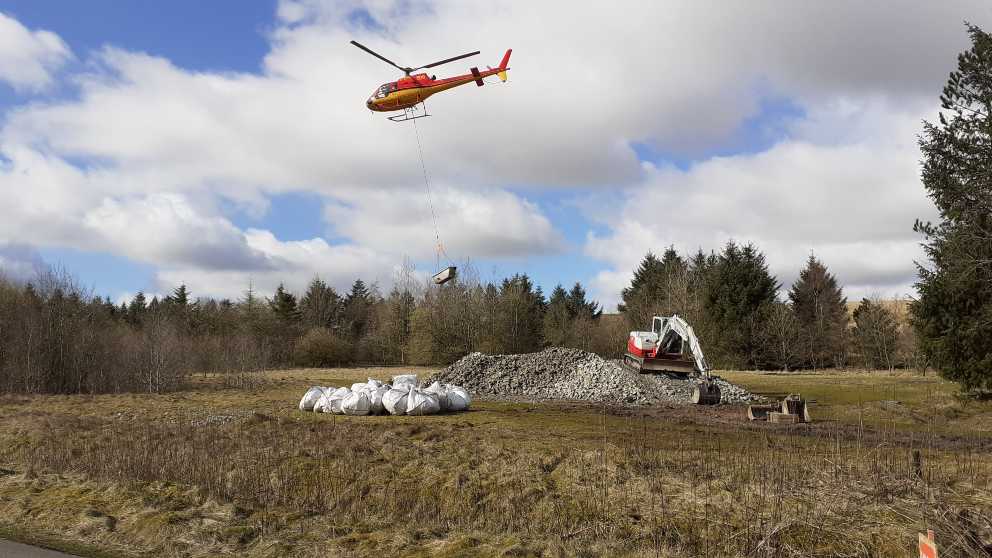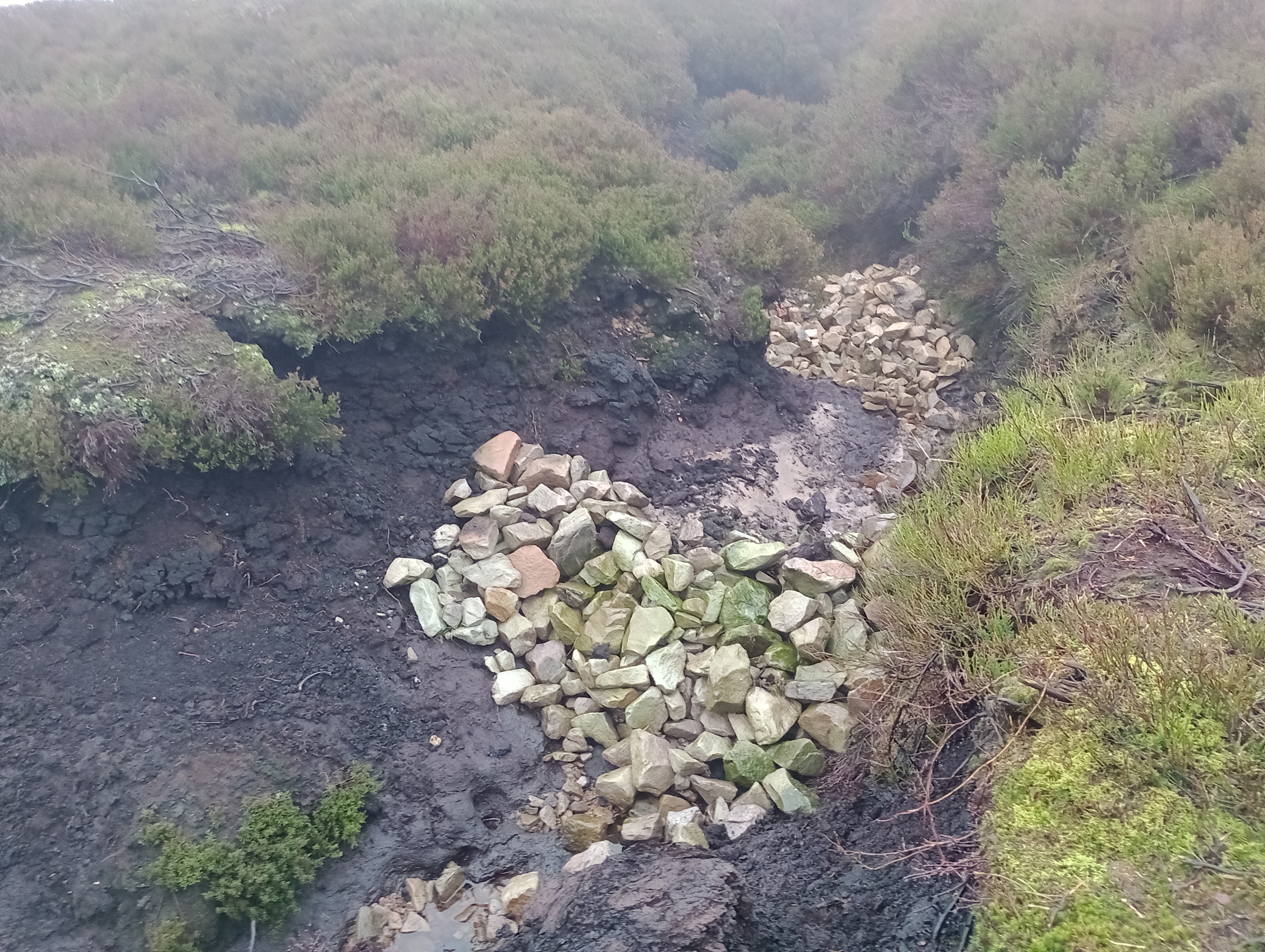Snailsden Moor
The funding is part of the government commitment to set 35,000 ha of degraded peatland in England on a path to restoration by March 2025
It will make a huge contribution to the future resilience of this landscape to climate change and create significant greenhouse gas benefits
On Snailsden moor avoided loss of 71,721 tonnes of carbon over the next 50 years will yield a greenhouse gas benefit of £10,960,701.00
PHASE 1
PROJECT START DATE: SEPTEMBER 2022
PROJECT END DATE: MARCH 2025
Working together with Natural England and funded by the Defra and Yorkshire Water on site at Snailsden moor, we are undertaking restoration works to improve approximately 416 hectares of badly degraded blanket bog within the South Pennine Moors Special Area of Conservation and the Peak District Moors ‘Special Protection Area’. By actively supporting the land we seek to achieve near natural condition on this section moor within 25 years.
Work will improve water quality by reducing peat erosion into water courses. It will also protect a historic environment that dates back over 9,000 years.
Our restoration programme will lead to better hydrology in the landscape which in turn will bring back species diversity across the site. In creating the environment for moorland specialised species to thrive on the site there will be increased opportunities for people to connect with nature on the moors, bringing the chance to spot protected bird species alongside hares, lizards, bees and plant life.
Snailsden moor lies due east of Manchester and became degraded as a result of its proximity to this industrious city. Prevailing westerly winds have deposited nitrous and sulphurous oxides on the moors as acid rain, a consequence of the historical coal-powered industries located in several nearby cities. This air pollution killed off the surface vegetation including sphagnum moss, the main peat-building materials which our work will seek to restore.
The most significant modern day risk to the site are current climate change predictions that show an increased likelihood of hot summers and wet winters. Wetter winters will bring an increased erosion risk to the bare peat, which leads to peat being washed off site and entering watercourses. Hotter Summers bring the increased threat of wildfire to the site while the site is still dry.
Conservation Work
Work on site started in the winter of 2022 comprising to date the installation of 424 stone dam units in eroding gullies helping towards the restoration of the blanket bog.
Works season 2023-2024
We are continuing with stone dams installation to slow the water flow through severally water-eroded peat gullies.
We’ll also install timber and coir dams where analysis shows it to be more appropriate than stone.
Reprofiling of steep eroding gully sides will create a more gently inclined slope so that plants have a chance to establish themselves in the peat without being washed away in heavy rain.
The installation of peat dams and bunding will create small pools of water which also supports nature and biodiversity bringing diverse insect populations to the site.
After construction work is complete we will revegetate the bare peat by covering the exposed soil with chopped heather (brash) to protect the peat and stop it being washed away by rain, and then apply lime, seed and fertilise mix to begin to grow grass and heather to bind the peat.
Once initial grasses are established and water begins to be held on the uplands, the next step will be the introduction of plug plants and sphagnum moss, planted by hand. The land will then be on its way to becoming a healthy bog.
The final stage of the project will be the production of a legacy plan for the site to protect works and ensure recovery continues.
Research & Monitoring
A peat depth survey has been completed.
12 baseline vegetation monitoring units have been installed across the site.
Baseline hydrology monitoring has been installed and planned.
A Von post analysis is complete.
Vegetation and sediment monitoring will be undertaken to monitor progress.
Communication and Engagement
Want to find out more?
A series and walk and talks and public engagement within the catchment area will give an opportunity to learn more and ask questions.
Sphagnum moss planting opportunities will soon begin with our teams of volunteers offering a chance to get hands on and restore the moor for future generations.
Also look out for our Bogtastic mobile exhibition out in the community here and come and say hello.
Funders
Our project partners and funders include Natural England, the Nature for Climate Peatland Grant Scheme, Peak District National Park Authority and Yorkshire Water, and together we will restore the site as conduct in-depth science and monitoring to ensure best outcomes for the site
Project updates

October 2024
Over Summer 2024 the Bogtastic Van has been out about at 17 different events, including Penistone Show, Sheffield Adventure Film Festival and The National Trust's site at Marsden.
The team engaged with 1,350 people, including 441 under 18's, about the restoration works and importance of them.

April 2024
Volunteers help with essential restoration work
In the 2023-24 works season we installed 1,268 stone dams on Snailsden, using approximately 1,400 tonnes of stone, alongside 203 timber dams and 39 peat dams. 23,339 metres of hagg edges and steep sided erosion gullies were reprofiled to allow vegetation to establish on them. 14.3 hectares of heather was cut and the heather brash then spread on the reprofiled slopes along with lime, nurse crop seed and fertiliser to stabilise the exposed peat. And volunteering began on the moor with 6260 sphagnum moss plug plants being planted by our groups, as part of 5.46 hectares of planting that was achieved. Thank you volunteers!

January 2024
Works progress on Snailsden Moor
This works season we have airlifted over 1800 units of stone (approximately 1400 tonnes!) and have used them to install stone gully blocks. Reprofiling of the steep eroding gully sides has also just commenced to help plants establish in the peat and reduce erosion.
The construction of timber dams into erosion gullies has begun at locations where the surveying identified the conditions to be more suitable for this method over stone dams.

2023-2024
New works season begins
Works season on Snailsden moor is well underway. The airlifting of materials to site began in early August 2023 and was able to transport most of the stockpiled stone up to the moor. The next airlift schedule will begin in October taking timber and lime, seed and fertiliser to the restoration site, so if you are out on the moors do look out for pathway notifications that helicopters are at work in the area.
Also, over the summer, in preparation, all heather brash needed for the moor was collected (a total of 2,400 bags) which is required for bare peat revegetation following the upcoming reprofiling works. In total 14 ha of heather were cut for brash spreading. 9 ha are remaining to cut for diversification.

22022-2023
Works completed to date
Over the first works season we were able to install 424 stone leaky dams across the site to limit the significantly slow the water flow off the uplands and captured peat that could potentially have been lost during periods of heavy rain